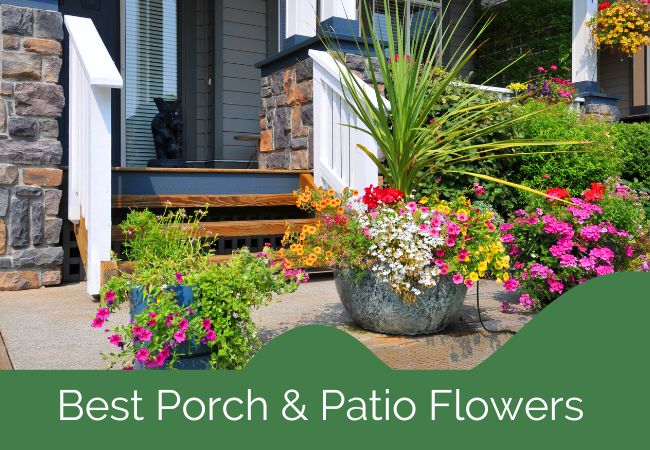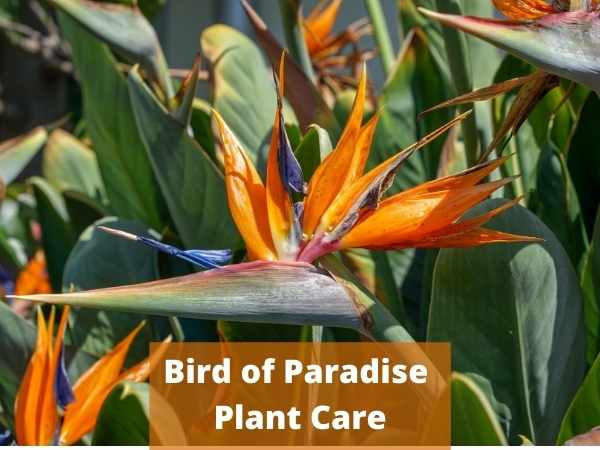Planting a wildflower bed garden is a visually stunning and ecologically beneficial way to enhance your landscape. These gardens replicate the natural charm of meadows and prairies, offering continuous seasonal color, minimal upkeep, and vital habitat for pollinators.
Planting Wildflower Beds
Whether you have a small backyard, a suburban lot, or several acres, in this detailed guide, I will help you design, plant, and care for a thriving wildflower bed.
Why Choose a Wildflower Bed Garden?
Low Maintenance
Once established, wildflower beds require minimal care compared to traditional flower beds.
Most species are drought-tolerant, pest-resistant, and thrive in low-fertility soils. There’s no need for chemical fertilizers or regular mowing.
Pollinator and Wildlife Habitat
Wildflowers attract a wide variety of pollinators, including bees, butterflies, and hummingbirds. They also provide food and shelter for birds, beneficial insects, and small mammals.
Extended Seasonal Color
By choosing a diverse mix of species, you can ensure flowers bloom from early spring to late autumn, maintaining constant visual interest throughout the growing season.
Soil Improvement
Deep-rooted wildflowers enhance soil structure, reduce erosion, and help retain moisture. Some species also fix nitrogen, improving soil fertility over time.
Sustainability
Native wildflowers reduce water usage, require no synthetic inputs, and contribute to regional biodiversity, making them an eco-friendly landscaping choice.
Planning Your Wildflower Bed
Choose the Right Location
Sun Exposure: Most wildflowers thrive in full sun (at least 6 hours daily). Some shade-tolerant species exist, such as columbine and woodland phlox, suitable for dappled or partial shade.
Soil Drainage: Ensure good drainage to prevent root rot. Avoid low-lying areas that stay wet. Sandy or loamy soils work well, though heavy clay can be amended with compost or sand.
Accessibility: Place your bed where it’s easy to water, weed, and enjoy. Avoid high-traffic zones unless planting walkable groundcovers.
Consider Your Garden Style
Naturalistic Meadow Style: Mimics wild landscapes with tall grasses and flowers in flowing arrangements. Great for larger properties and rural aesthetics.
Structured Border Beds: Ideal for smaller yards or urban gardens. Use edging materials and deliberate plant placement to create visual order while maintaining a wild feel.
Mixed-Use Gardens: Combine wildflowers with herbs, vegetables, or shrubs. This style supports companion planting and enhances biodiversity.
Wildflower Types: Annuals vs. Perennials
Annuals: Complete their life cycle in one season. Examples: cornflower, cosmos, and California poppy. They provide quick color and often reseed themselves.
Perennials: Live for multiple years. Examples: purple coneflower, black-eyed Susan, and milkweed. While they may take longer to establish, they offer long-term reliability.
Biennials and Mixes: Biennials bloom in the second year. Mixing annuals, perennials, and biennials ensures color and growth continuity.
Know Your Planting Zone and Native Species
USDA Plant Hardiness Zones: Know your zone to choose plants that can survive local winters.
Native Wildflowers: Plants indigenous to your region are better adapted to local climate, pests, and soil. They support native pollinators and require less maintenance.
Local Resources: Use native plant databases, regional seed companies, or extension offices to find suitable species.
Wildflower Bed Design Ideas
Color-Themed Beds
Monochromatic Themes: Choose a single color family (e.g., all purples: lavender, verbena, purple coneflower) for a cohesive, calming effect.
Complementary Color Schemes: Use color theory to create contrast. Yellow and purple, orange and blue, or red and white combinations catch the eye and add drama.
Seasonal Bloom Planning
Early Spring Bloomers: Baby blue eyes, lupines, and columbine start the season with cool hues and delicate foliage.
Summer Standouts: Coreopsis, bee balm, and blanketflower bring vibrant, mid-season color and attract numerous pollinators.
Late Season Interest: Asters, goldenrod, and sneezeweed provide a final burst of color and essential food for migrating pollinators.
Pollinator-Friendly Layouts
Bee Gardens: Include daisies, sunflowers, and borage. Plant in drifts so pollinators can forage efficiently.
Butterfly Beds: Focus on nectar-rich species and larval host plants like milkweed, parsley, or fennel.
Hummingbird Havens: Use tubular flowers such as penstemon, salvia, and trumpet vine. Position taller plants toward the back for visibility.
Cottage Garden Style
Old-Fashioned Charm: Blend wildflowers with heirloom roses, herbs like thyme or sage, and flowering vines. Emphasize fragrance, color, and casual layering.
Layering for Depth: Place taller plants in the back (e.g., hollyhock, sunflower), mid-height in the middle (e.g., echinacea, bee balm), and short varieties (e.g., alyssum, violas) in front.
Raised or Framed Beds
Elevated Aesthetics: Use wood, stone, or steel to define edges. Raised beds improve drainage and soil control, making them ideal for poor or compacted soil.
Neatness and Order: Framed beds help contain wildflower growth and simplify weeding and watering.
Preparing and Planting Your Wildflower Bed
Soil Preparation
Remove existing turf, weeds, and debris. Sheet mulching with cardboard and compost can suppress weeds naturally.
Light tilling or rough raking helps seeds make good contact, but avoid deep tilling to prevent weed seed germination. Many wildflowers thrive in lean soil. Add compost only if the soil is heavily degraded.
Seeding Methods
In cooler climates, sow in early spring or late fall. In warmer zones, fall seeding allows natural stratification (cold exposure) for better germination.
Broadcast Seeding: Mix seeds with sand (10:1 ratio) for even distribution. Use a hand spreader for larger areas.
Seed-To-Soil Contact: Lightly rake seeds into the soil or press them down with a board or roller. Do not bury deeply.
Initial Watering: Keep the area consistently moist for the first 3–6 weeks to aid germination.
Using Seedlings or Transplants
Starting with nursery-grown plants jumpstarts growth and fills in gaps. Use seedlings to anchor focal points or fill in bare spots while seeds germinate.
Maintaining a Thriving Wildflower Bed
Watering Guidelines
Water lightly and frequently until seedlings are well-rooted (first 6–8 weeks). Water only during prolonged dry spells. Most wildflowers are drought-tolerant once mature.
Weed Management
Hand-pull weeds while wildflowers are small to avoid competition. Apply organic mulch or install edging to prevent invasive grasses. Encourage dense growth to shade out weeds naturally.
Deadheading and Seasonal Pruning
Remove spent blooms on annuals to encourage continued flowering. Allow some plants to go to seed for natural propagation. In late fall or early spring, mow or cut back perennials to 4–6 inches to tidy up and stimulate regrowth.
Wildlife Support
Bird Habitat: Leave seed heads on echinacea, rudbeckia, and grasses for winter bird food.
Pollinator Shelters: Include brush piles, log stacks, or insect hotels to provide nesting spots.
Water Source: Add shallow water trays with stones for bees and butterflies to safely drink.
Wildflower Bed Ideas for Different Spaces
Small Yards and Containers
Compact Species: Choose dwarf cosmos, dwarf zinnias, or rock cress for limited space.
Raised Planters: Grow wildflowers in troughs or barrels for a mobile, controlled display.
Borders and Fence Lines
Linear Planting: Use tall wildflowers like Joe-Pye weed or hollyhock to create a colorful privacy screen.
Vertical Accents: Include climbing varieties or trellised vines like clematis or morning glory.
Curbside or Parking Strip Gardens
Tough Plants: Choose resilient, low-growing species like creeping thyme, sedum, or yarrow.
Traffic Safety: Maintain clear sight lines and avoid overly tall species near roads.
Large Meadows or Pasture Conversion
Mass Planting: Use bulk seed mixes with native grasses and flowers like goldenrod, switchgrass, and blazing star.
Pathways: Mow walking trails through the space to encourage exploration and maintenance access.
Common Mistakes to Avoid
Overwatering: Most wildflowers prefer dry conditions. Excess moisture promotes weeds and disease.
Poor Soil Prep: Neglecting to remove weeds or loosen soil can lead to poor seed germination.
Choosing Invasives: Avoid aggressive species like purple loosestrife or crown vetch that outcompete natives.
Unrealistic Expectations: Wildflower gardens take time to mature. Many perennials bloom in the second or third year. Patience is key.
Final Thoughts
Creating a wildflower bed garden is an act of beauty and stewardship. With a bit of planning, the right species, and a little patience, you’ll cultivate a thriving space full of seasonal blooms, buzzing pollinators, and natural tranquility.
Whether you’re aiming for a small border or a sweeping prairie, wildflowers are the perfect blend of simplicity, sustainability, and splendor.
If you love planting flowers, subscribe to my newsletter to receive the latest posts. Also, follow me on Pinterest to see awesome pins.








